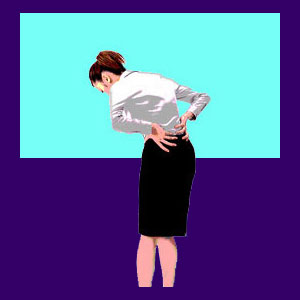
A leg length discrepancy is a common diagnosis most often pronounced by chiropractors and occasionally, by osteopaths. I was subjected to this diagnosis for the 18 years I endured basically useless treatment for my own chronic lumbar back pain. Short leg conditions were certainly blamed as contributors to my suffering for almost 2 decades.
There are 2 distinctive types of leg length issues and it is crucial to understand both in order to fully appreciate how unequal leg lengths may or may not be part of your causative dorsopathy concern. This article helps to enlighten patients about short leg problems and how they may or may not be related to any back and leg pain expressions that might exist.
Skeletal Leg Length Discrepancy
A skeletal leg length difference describes a condition in which the patient actually has one leg longer than the other, verifiable by diagnostic imaging and based on unequal bone length. This condition is implicated in many lower back and hip pain syndromes, as well as many sciatica pain conditions.
In some cases, the difference in leg lengths is slight and not obvious to the naked eye, while in others, the difference can be plainly seen. Regardless, structural short leg syndrome conditions are often theorized to be the cause or contributor to a back pain history. In many cases, this may be correct, particularly if orthotics or surgery improves the condition 100%.
However, in other patients, a structural short leg can act as a scapegoat for back pain, especially when the difference is minor. This type of condition can and will be diagnosed by virtually any type of care provider.
Functional Leg Length Differential
A functionally short leg is almost always seen in the realm of the chiropractic practitioner and describes the type of condition that I was diagnosed with day after day, year after year.
A functionally short leg means that there is no anatomical skeletal reason for the discrepancy to occur and the source of the difference in leg length almost always falls on some suspect theory, such as poor posture, muscle imbalance or vertebral and/or pelvic misalignment. I have recently spent quite a bit of time interviewing physicians about this condition and found most of them to be in agreement that the vast majority of chiropractic-diagnosed short leg conditions are non-issues. This opinion was almost universal among medical doctors.
The exceptions to this rule were cited as patients who had verifiable soft tissue pathologies which may lead to a difference in apparent leg length, such as badly injured tendons or ligaments. In these cases, physical therapy was cited as the indicated choice for treatment, not chiropractic, once again, in virtually all cases.
The condition was typically described as “much ado about absolutely nothing” to quote one noted orthopedic surgeon.
Help for Leg Length Discrepancy Sufferers
I used to buy into this functional short leg length diagnosis, since I was basically raised into the idea as I grew up. However, given time and knowledge, I no longer think the principle is valid as a source of pain in the great majority of diagnosed patients.
I mean really… I see this case all the time, when patients will get a spinal adjustment and all is deemed fixed and within 1 minute later, there is already a noticeable difference in leg length if examined by another chiropractor.
I used to routinely suggest patients try this for themselves in offices with more than one chiropractic doctor on call. Either the diagnosis is faulty or the treatment provided is not effective. I will let you all decide that for yourselves. Before coming to any conclusion, do lots of research on your own and be sure to use more than one type of informational source when discovering the facts for yourself.





